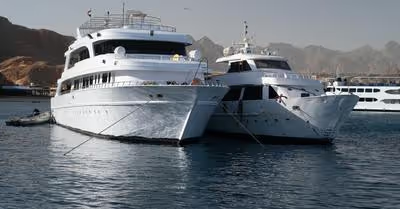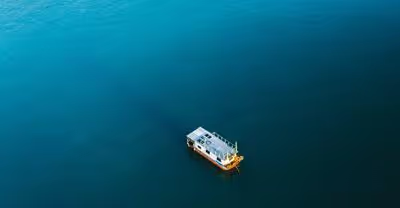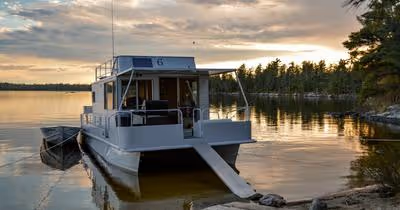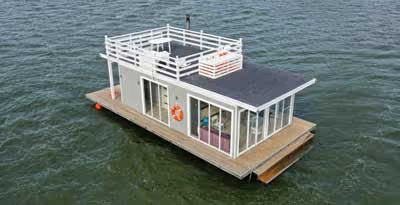
Key Takeaways
- A 100-ton boat has a displacement of 224,000 pounds.
- Ships this size will range from 65 to 85 feet in length.
- The largest freight boats are Triple-E class and weigh around 200,000 tons.
- A 100-ton captain needs a USCG Master License of the appropriate tonnage.
- Displacement is the weight of the water pushed aside by a floating ship.
The dimensions of a 100-ton boat are impressive, from yachts to commercial vessels. Learn how weight relates to size and licensing for operating these ships.
A 100-ton boat, with a displacement of 224,000 pounds, ranges from around 65 to 85 feet in length. These include yachts, commercial trawlers, and sailing vessels. Operating a 100-ton boat comes with licensure rules, such as obtaining a USCG Master License.
With a passion for all things nautical, we've built an understanding of boats and their intricacies. Our knowledge enables us to provide you with engaging information for all boating enthusiasts, ensuring you're well-equipped for your next adventure on the water.
100-Ton Boats: Size, Dimensions, Licenses, and More
Most of us have a basic understanding of what a 100-ton boat entails; let's delve deeper into how the weight of a ship can relate to its length, width, or height.
While the correlation isn't exact, some general rules of thumb can help you visualize these maritime giants.
We'll also take a look at one of the most important metrics when it comes to large ships: displacement.
The Dimensions of a 100-Ton Boat
To give you a rough idea, a 100-ton boat could range from 65 to 85 feet long.
The width, also known as the beam, can vary between 16 to 25 feet, depending on the boat's design and purpose.
The height, or draft, is the distance between the waterline and the bottom of the hull.
The draft can span anywhere from 5 to 10 feet or even more for a vessel of this size.
These are not your average weekend sailboats; they're more often multi-deck yachts, whale-watching boats, or large commercial ships/ferry boats.
A standard dive boat can weigh over 100 tons, too.
What is a 100-Ton Boat's Displacement?
A 100-ton boat has a displacement of a staggering 224,000 pounds!
To truly appreciate the size of a 100 gross ton boat, we need to first understand the concept of displacement.
Displacement is simply the weight of water that a vessel pushes aside when it's floating.
It's like how the water level in your tub rises when you get in for a bath.
In the world of boating, it's measured in long tons, where one long ton equals 2,240 pounds.
Internal volume can impact both the amount of water displaced and external size.
Why Does the Displacement of a Ship Matter?
The displacement of huge ships matters for several reasons, primarily related to stability, performance, and safety.
- It determines the ship's buoyancy, ensuring that the vessel remains afloat and stable in various sea conditions.
- Displacement affects a ship's performance in several ways, including speed, fuel efficiency, and maneuverability.
- Understanding displacement is crucial for adhering to safety regulations, as it allows for proper load management and prevents overloading, which could lead to capsizing or structural damage.
In essence, the displacement of a huge ship is a critical factor in ensuring its safe, efficient, and reliable operation at sea.
Licenses and Regulations Regarding 100-Ton Boats and Captains
When it comes to owning, operating, or even just stepping foot on a 100-ton boat, there are certain licensure and regulatory aspects to consider.
The weight and size of a vessel dictate the type of license and qualifications required to operate it legally.
In the United States, for example, boat operators must adhere to the guidelines set forth by the United States Coast Guard (USCG approved).
The USCG issues Merchant Mariner Credentials (MMC) for professional mariners, which include various licenses and endorsements for a captain’s license based on size and type.
What Is a USCG-Approved 100-Ton Captain, and What License Do They Need?
For a 100-ton boat, an operator would generally require a USCG Masters License, specifically a license for vessels up to 100 gross tons.
This license allows the holder to operate inspected vessels carrying more than six passengers for hire, as well as uninspected vessels.
To obtain this license, an applicant must meet specific sea service time requirements, take an approved course, pass a written examination, and undergo a background check and drug test to be eligible.
Master inland and ocean material differs.
What Is the Highest Boat License? (To Operate Inspected Vessels)
The highest level license recognized by the USCG is a 1600-ton Master License, allowing an individual to operate vessels over 500 gross tons.
Check out the Coast Guard and National Maritime Center's official Merchant Mariner Credentialling page for more information.
NMC credentials are serious business and not meant for regular hobbyists or non-professional sailors.
Other Regulations
Apart from operator licensure, it's also important to consider other regulatory aspects associated with owning and operating a 100-ton boat.
These may include compliance with safety and environmental regulations, such as the International Convention for the Safety of Life at Sea (SOLAS), which sets minimum standards regarding construction, and the International Convention for the Prevention of Pollution from Ships (MARPOL).
A 100-ton boat may also be subject to local, regional, and international registration and inspection requirements, depending on where it is being operated.
How Long Does a Boat Have to Be to Be Yacht Certified?
The classification of a boat as a yacht is not strictly determined by its length; rather, it's based on a combination of factors, including its design, purpose, and amenities.
Yachts are widely considered to be recreational vessels that prioritize luxury, comfort, and style. However, there is a commonly accepted threshold when it comes to size.
Most industry experts consider a boat to be a yacht when it reaches a length of around 30 to 40 feet or more.
Boats in this size range typically offer more advanced features and accommodations than smaller vessels, which aligns with the expectation of luxury and comfort associated with yachts.
It's worth noting that as a boat's size increases, so does the level of luxury and sophistication, eventually leading to the classification of "superyacht" and "megayacht" for vessels exceeding 100 and 200 feet in length, respectively.
How Many Tons is a Freight Boat?
Freight boats can weigh anywhere between 5,000 tons to around 200,000 tons or more.
These maritime workhorses are the unsung heroes of global trade.
From small coastal vessels to gargantuan container ships, the range of freight boats is vast.
This is why their gross tonnage can vary significantly.
At the smaller end of the spectrum, you'll find coastal freighters or feeder vessels, which typically weigh between 5,000 to 15,000 tons.
They transport goods between nearby ports or serve as a link between smaller harbors and larger shipping routes.
Massive container ships, bulk carriers, and oil tankers can weigh anywhere from 50,000 to over 200,000 tons, with some even pushing beyond 300,000 tons!
These ships are designed to carry massive amounts of cargo, from consumer goods to raw materials.
What Is the Largest Freight Boat?
To put things into perspective, let's consider the largest container ships currently in operation, the Triple-E class vessels.
With a tonnage of around 200,000 tons and the capacity to carry up to 18,000 twenty-foot equivalent units (TEUs), these ships are a testament to human ingenuity.










